A visit to Machu Picchu in Peru has been one of the top destinations in our travel bucket list, and we were finally afforded the opportunity to make that a reality this summer. We dropped our kiddos with their grandparents in Chicago, then embarked on a weeklong trip to discover the architectural treasures of the Incas in Peru. We spent a couple of days in the capital Lima then took a flight to the Cusco, former capital of the Incan empire, which is up in the highlands of the Andes mountains. From the heights of Cusco (3,400m, 11,000 ft) we headed to the slightly lower Urubamba in the Sacred Valley to acclimatize better to the altitude, and this was our base for the next few days.
Getting To Machu Picchu
Once we had spent a couple of days in the Sacred Valley exploring nearby Inca ruins and adjusting to the high altitude, it was time to fulfill the reason for our Peru trip – visiting Machu Picchu. This was in itself a logistical exercise – requiring a car ride to nearby Ollantaytambo, a train to the town of Aguas Calientes, then a bus up to the entrance to Machu Picchu before we could hike around the ruins.
We started with an early morning departure from Ollantaytambo station on a comfy Inca Rail train. The wide windows of the carriage afforded us panoramic views of the mountains towering over the rail tracks, as we then sped along the winding Urubamba river. The terrain changed about midway from dry brown landscapes to more lush green cloud forest terrain as we approached our final destination of Aguas Calientes – the gateway to Machu Picchu. At Aguas Calientes we then boarded a bus for a 30 minute ride up the mountain ridge to the entrance of the Machu Picchu complex. The winding steep road had multiple switchbacks, with amazing views of the valley and the river down below.
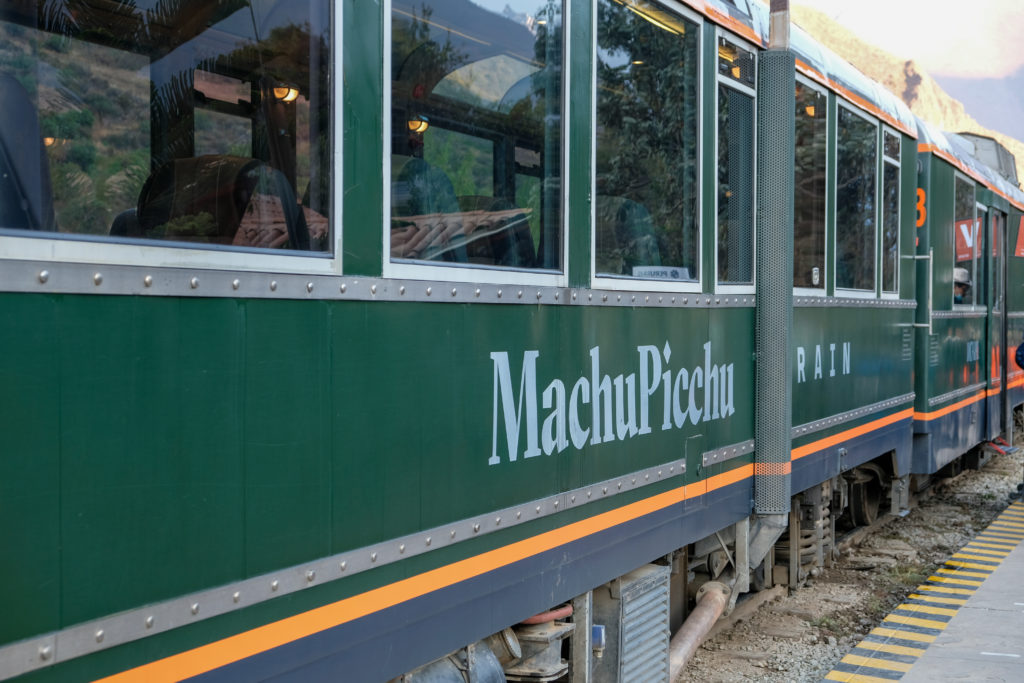
Inca Rail from Ollantaytambo
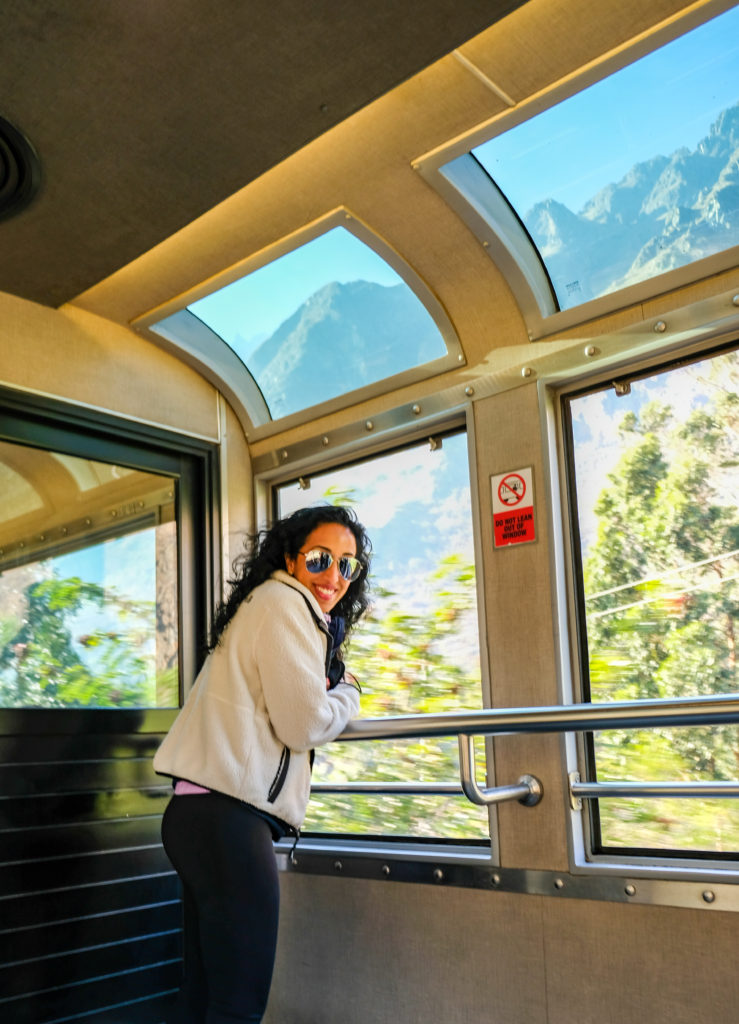
Taking in the panoramic views of the surrounding mountains
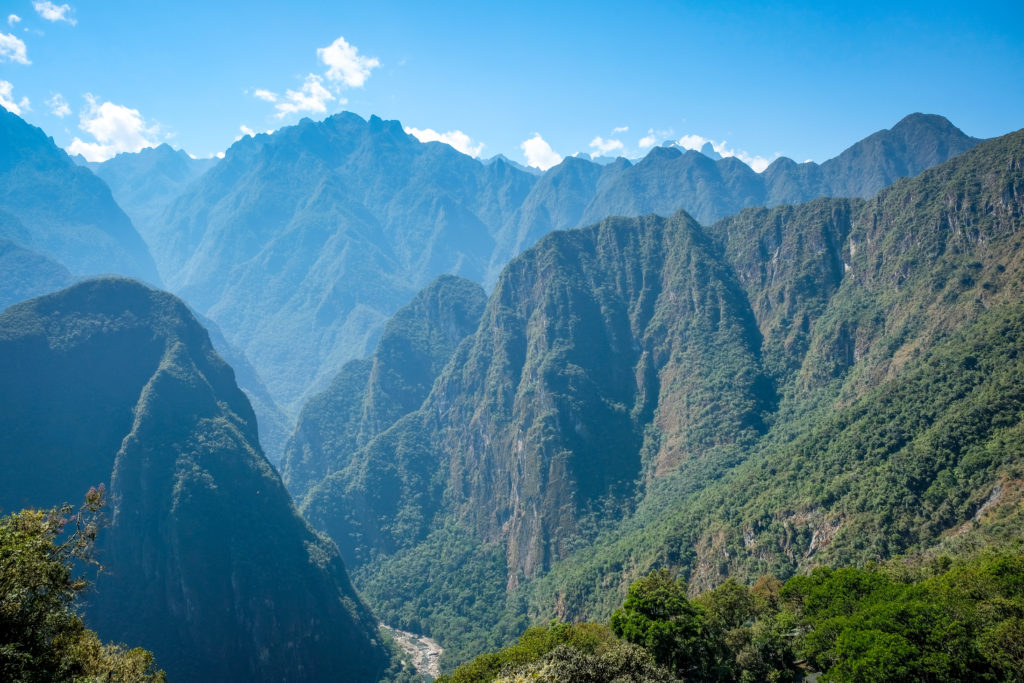
En route up to the ruins, with the mighty Urubamba river winding down below
The ‘Re-Discovery’ of Machu Picchu by Hiram Bingham
The citadel of Machu Picchu is believed to have been constructed under the direction of Inca ruler Pachacutec in the early 15th century. The name Machu Picchu means ‘old peak’ in the local Quechua language, and is actually the name of the mountain peak overlooking the city. As the Spanish Conquistadores led by Francisco Pizarro began their looting and subjugation of the Incas with the sacking of the capital Cusco and surrounding areas, the location and memory of Machu Picchu was eventually lost to the outside world. It was rediscovered in July 1911 by Yale professor and archaeologist Hiram Bingham, who was alerted about the ruins by locals at nearby Aguas Calientes while on an expedition to find the mythical lost city of Vilcabamba. He found the terraces and ruins of Machu Picchu overgrown by vines and brush, and began to uncover the whole complex. Bingham made additional trips to Peru over the next 5 years in collaboration with Yale University and the National Geographic magazine – and is credited with popularizing the knowledge of Machu Picchu both within Peru and Globally.
More than a century after the rediscovery of Machu Picchu, there is still uncertainty about the purpose of the city, and why it was built by the Incas in such a remote and inaccessible location. Theories abound about the site – from royal Inca retreat in the mountains, a fortress, an astronomy center, a holy temple to the sun god, to even a sanctuary for the Inca’s ‘virgins of the sun’. To this day though there is still no clarity on why Machu Picchu was ultimately abandoned in the mid 16th century and left in ruins till it’s rediscovery.
Exploring the ruins
Once we had entered the main complex, we hiked up a steep stone pathway to the upper viewing platforms for our first views of magical Machu Picchu. It was truly breathtaking to lay our eyes on this mountain citadel of the Incas – an oasis of green terraces and stonework on steep ridges, flanked by mighty mountains and snow covered peaks all around. The unmistakable peak of Huayna Picchu mountain in the background towered over the ruins as a watchful sentry. As we took in the splendor of this Incan masterpiece on the terraced mountain slopes, it was easily evident why this UNESCO world heritage site was voted as one of the seven modern wonders of the world in 2007.
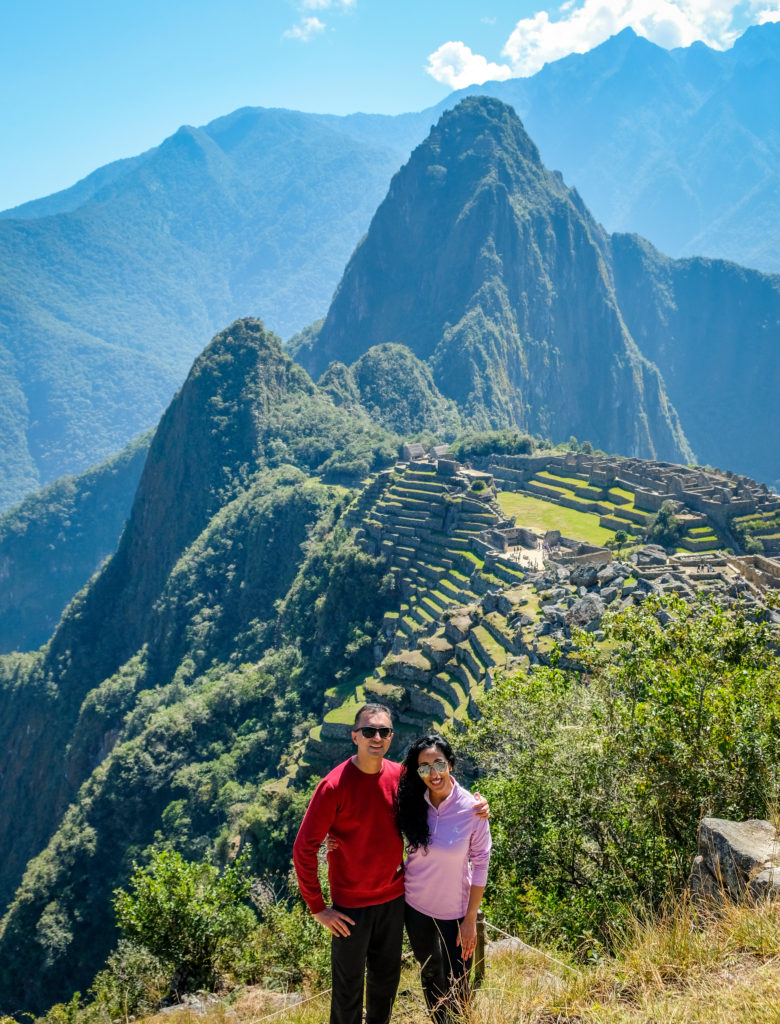
Machu Picchu framed by Huayna Picchu peak in the background
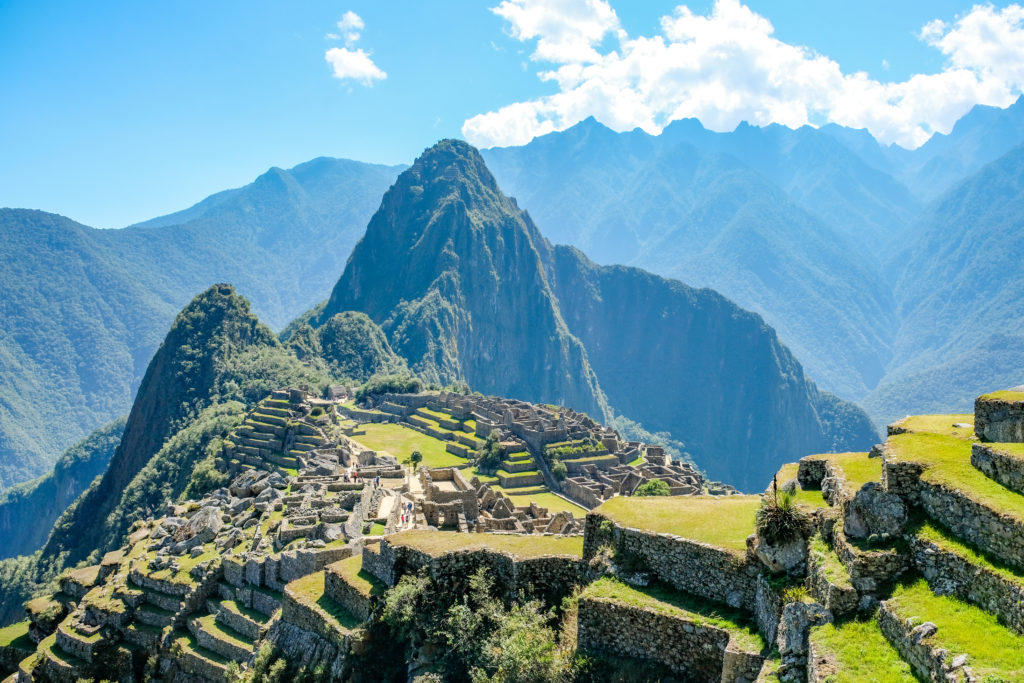
Iconic view of the ruins
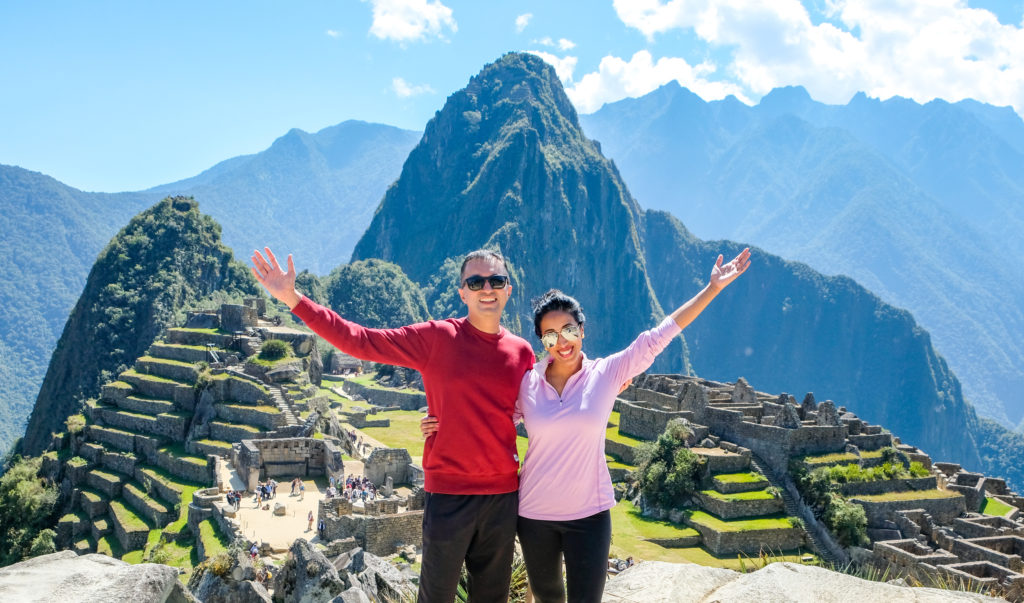
Made it to Machu Picchu!
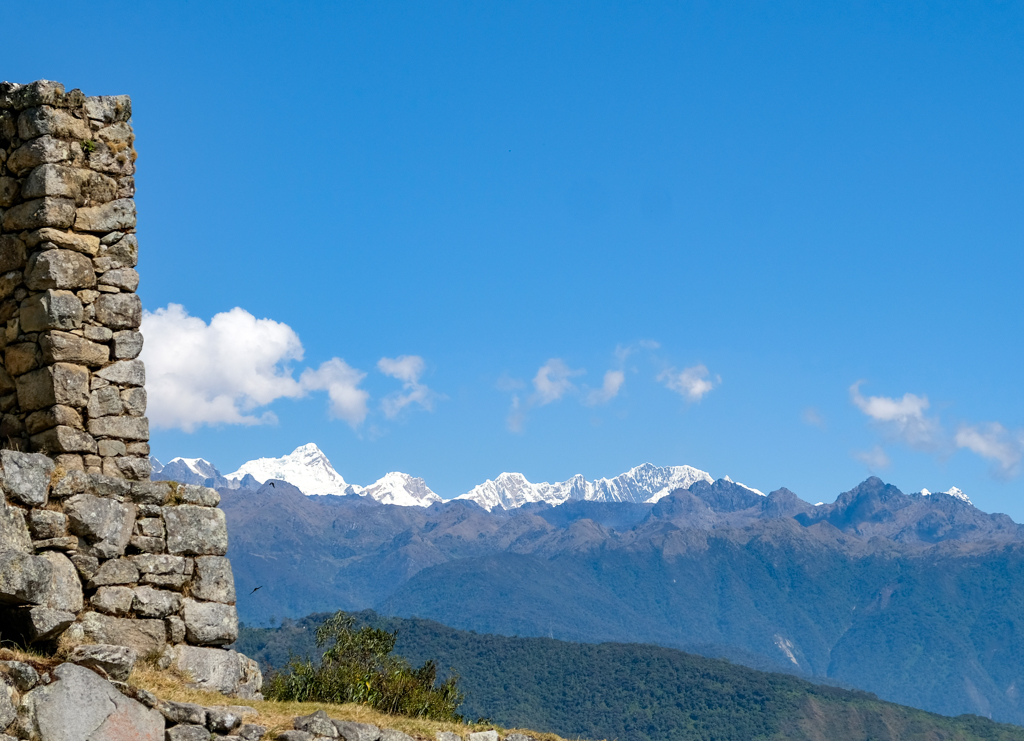
Snow capped peaks surrounding the ruins
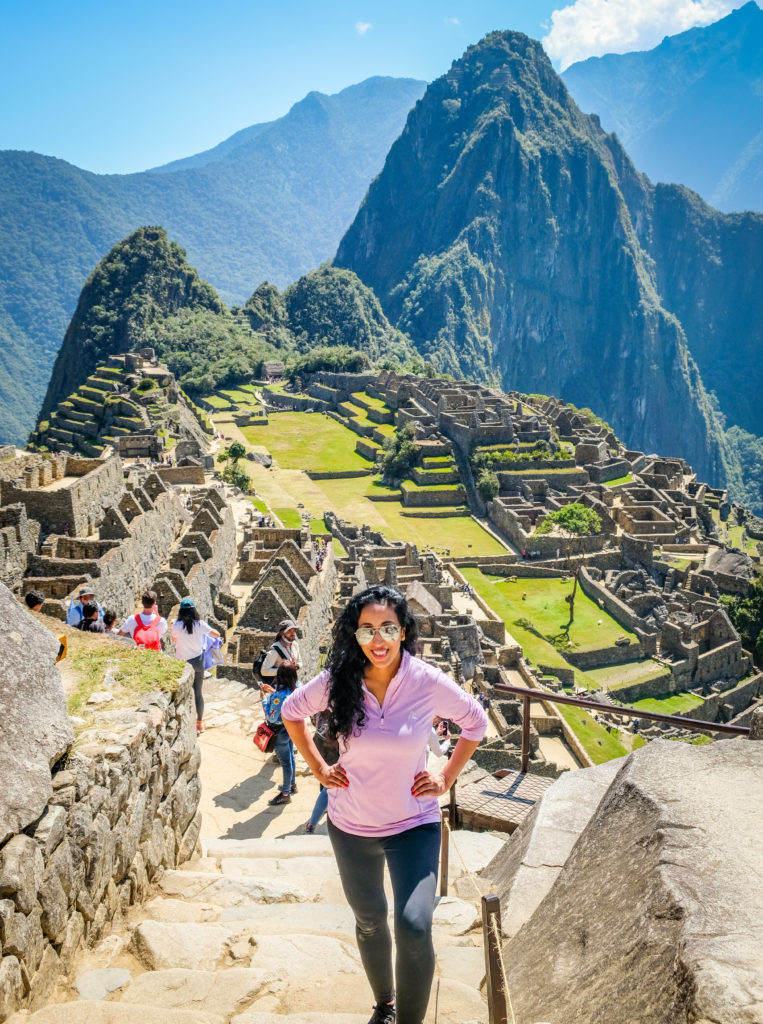
Heading down to the main ruins
The temples, settlements and agricultural structures were all built in harmony with the surrounding terrain and were meant to accentuate the natural landscapes. Walls and retaining walls for the terraces were constructed out of white granite stone, and remnants of the stone quarry still exist at the outer flanks of the main ruins.
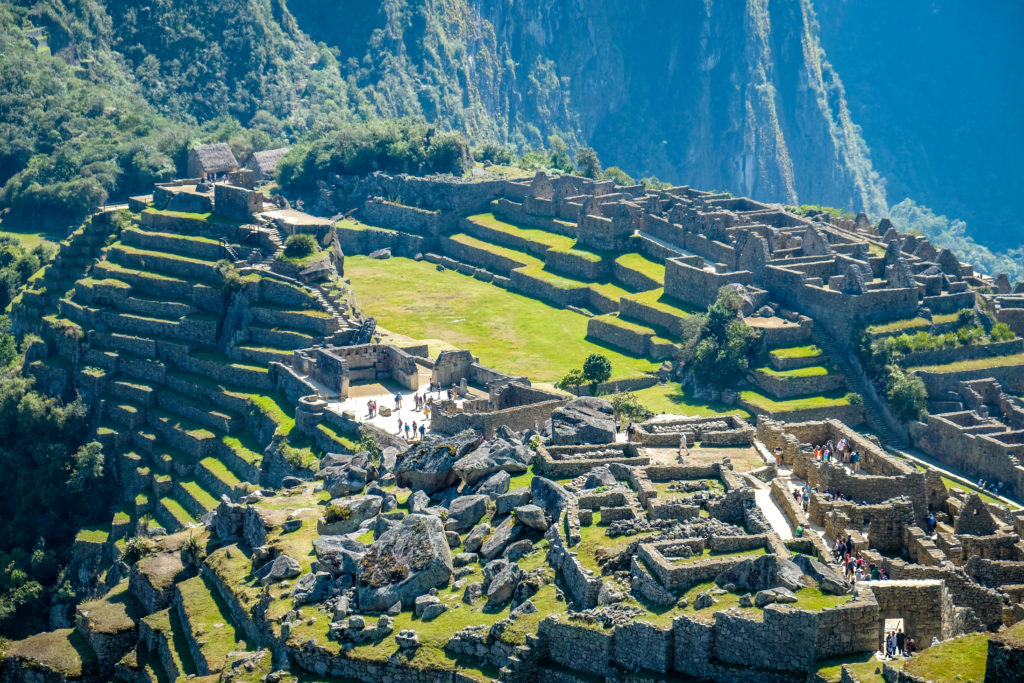
Main Courtyards and Temples area
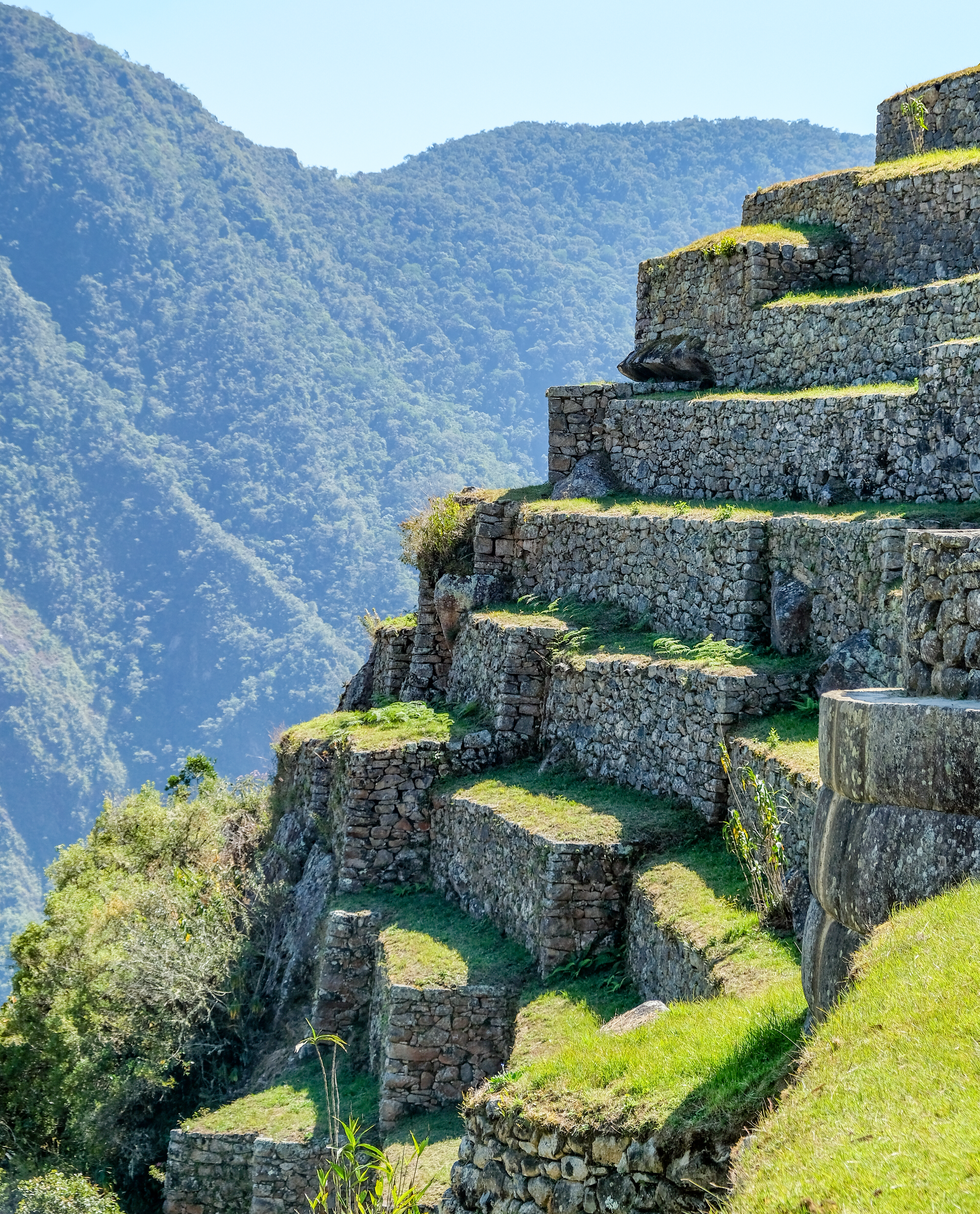
Masterfully constructed stone terraces against the sheer cliffs
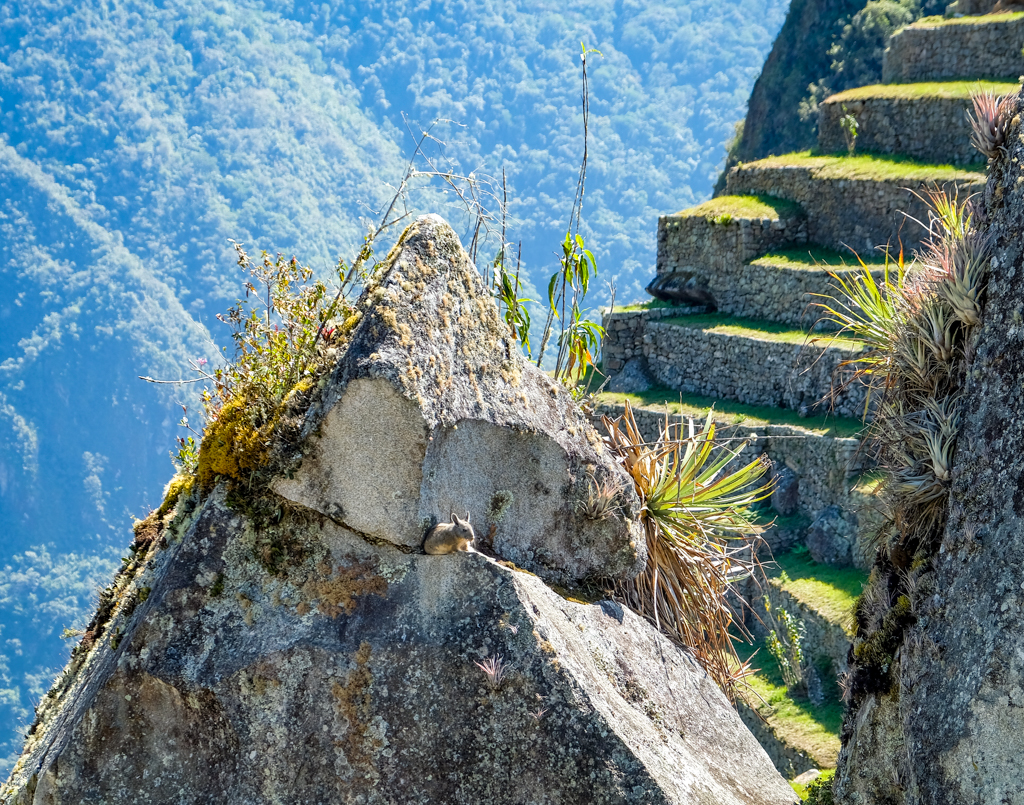
Tiny wildlife sighting
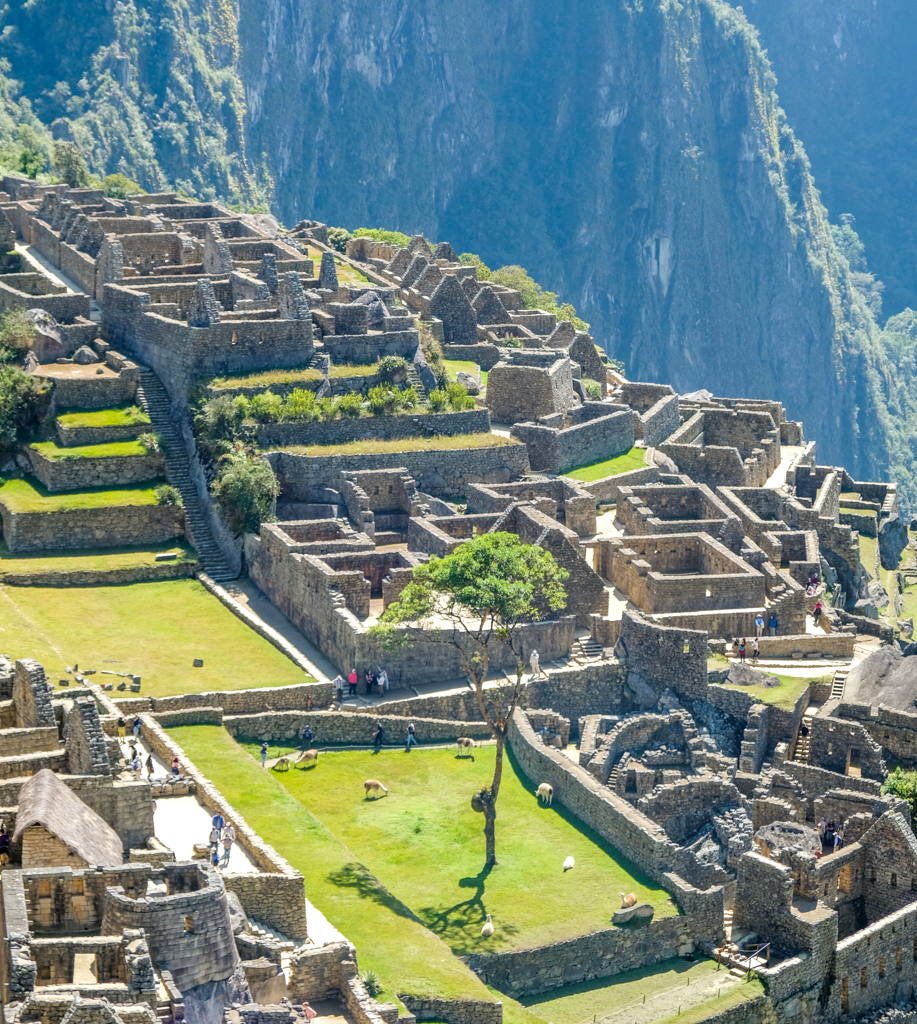
Spot the Llamas
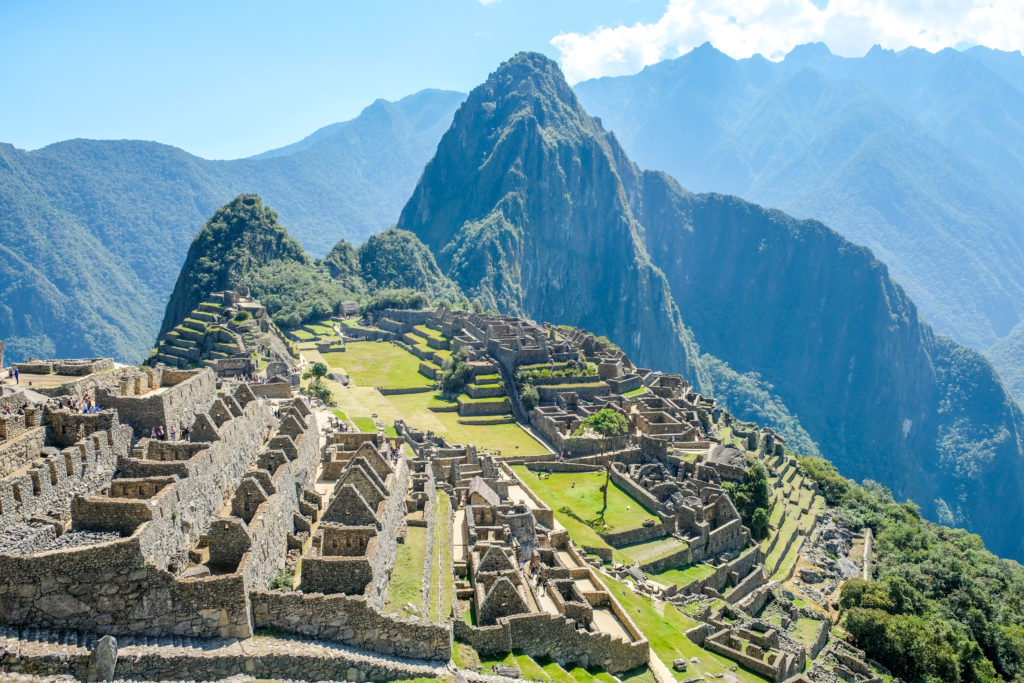
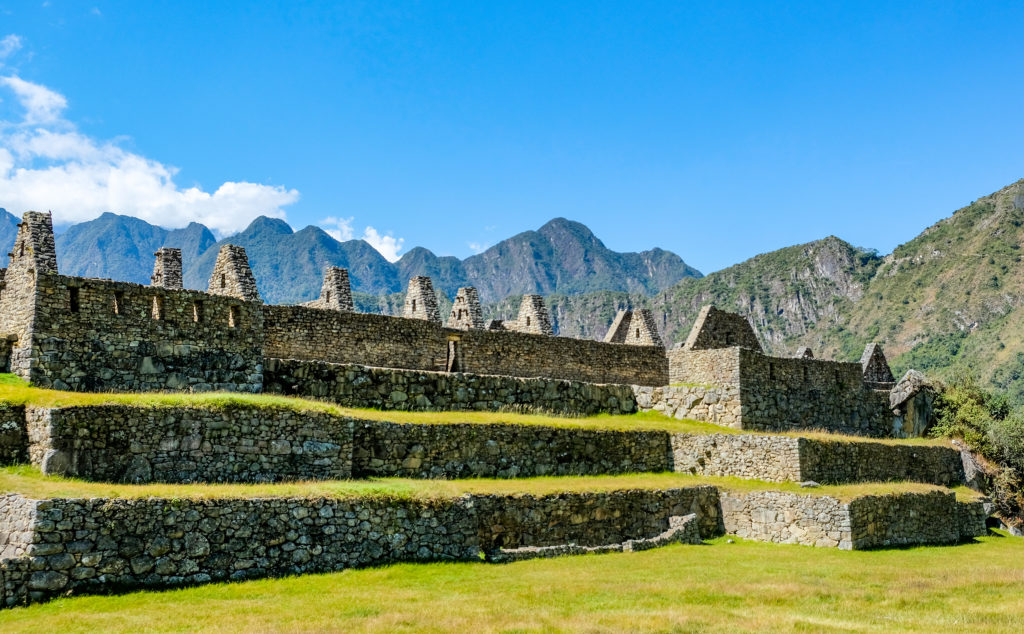
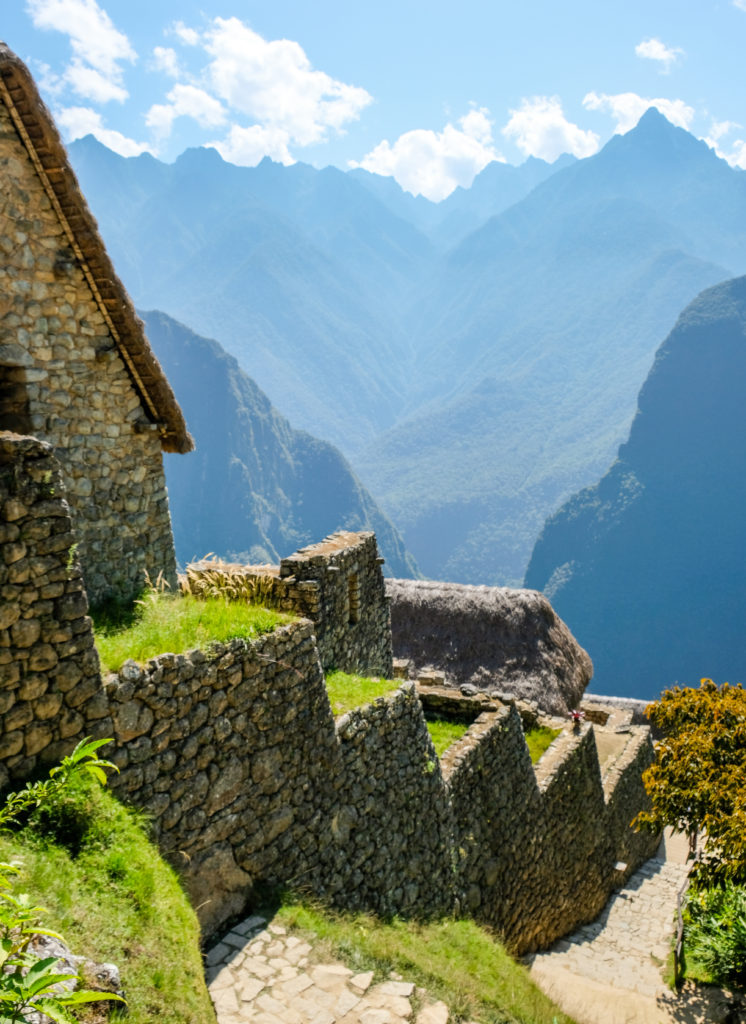
![]()
![]()
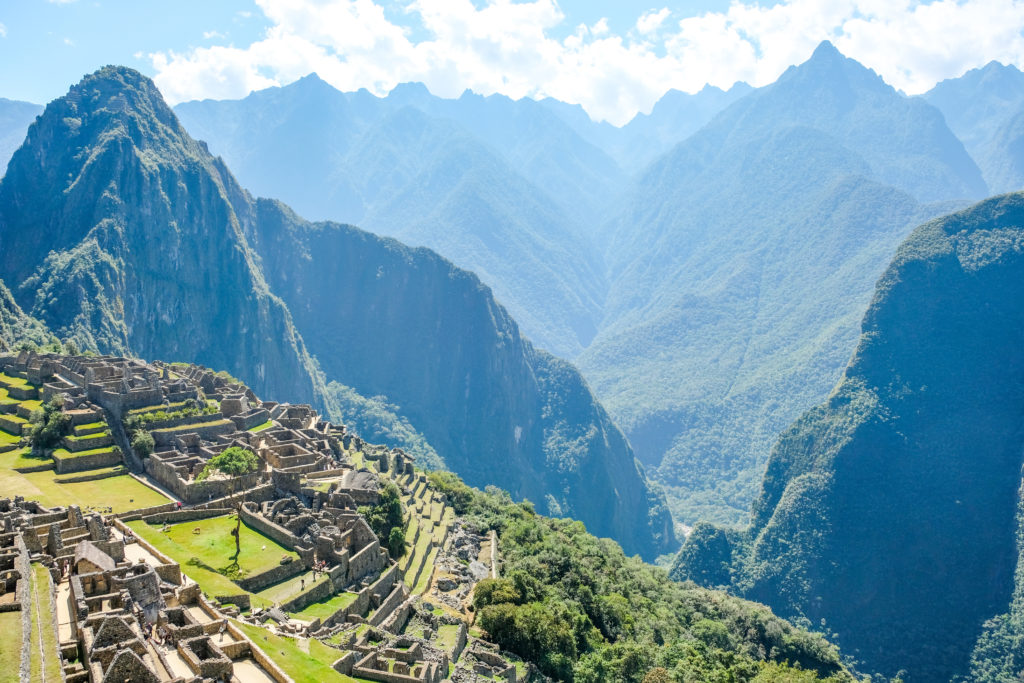
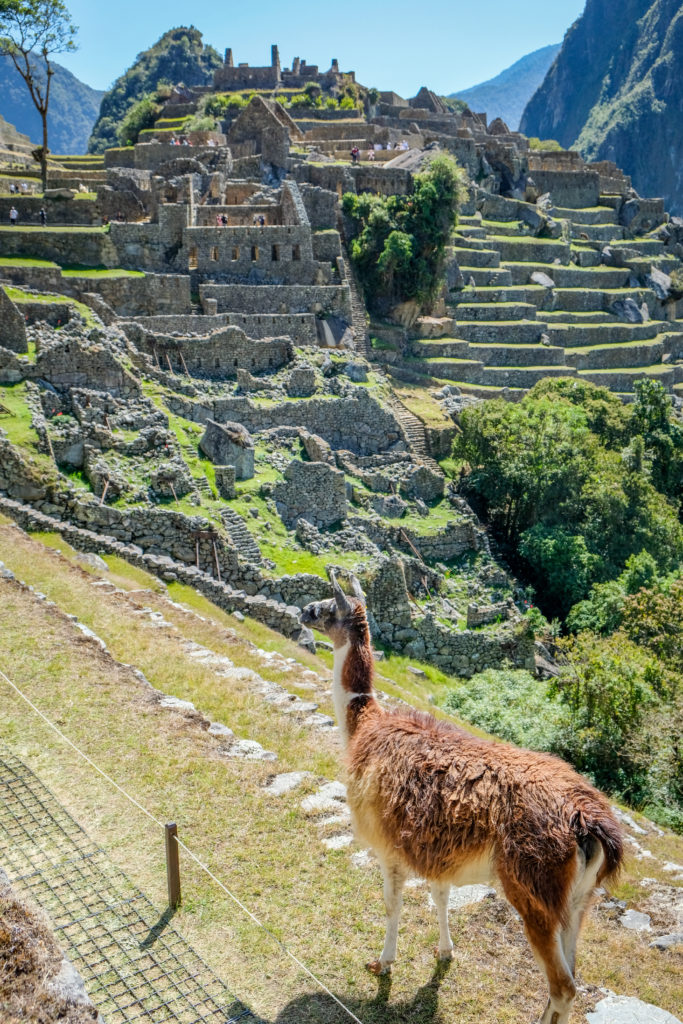
Customary Llama sighting
Marveling at the Inca stonework up close
One of the highlights of our visit was witnessing firsthand the masterful Inca stonework interspersed throughout the city complex. The stones were made to fit perfectly together, almost like jigsaw puzzles and without the need for any mortar. Doorways, windows are arches were built in a trapezoidal shape to provide better load bearing properties and stability to the structures. The fact that these buildings are still standing after the centuries and through many earthquakes is testament to the superior technical and architectural skills of Inca builders. Another example of their technical ingenuity is the network of aqueducts channeling water from springs up in Machu Picchu mountain down to the ruins. Narrow waterways run all throughout the complex to distribute water to the various inhabited areas.
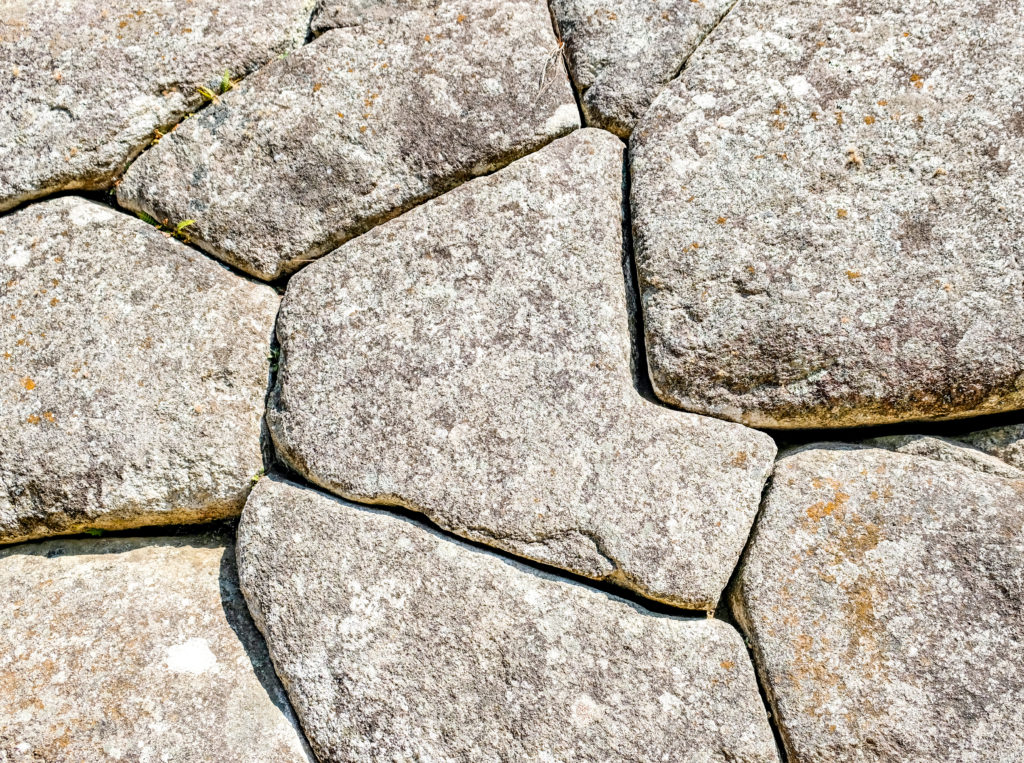
Precise stonework akin to a jigsaw puzzle, sans mortar or concrete!
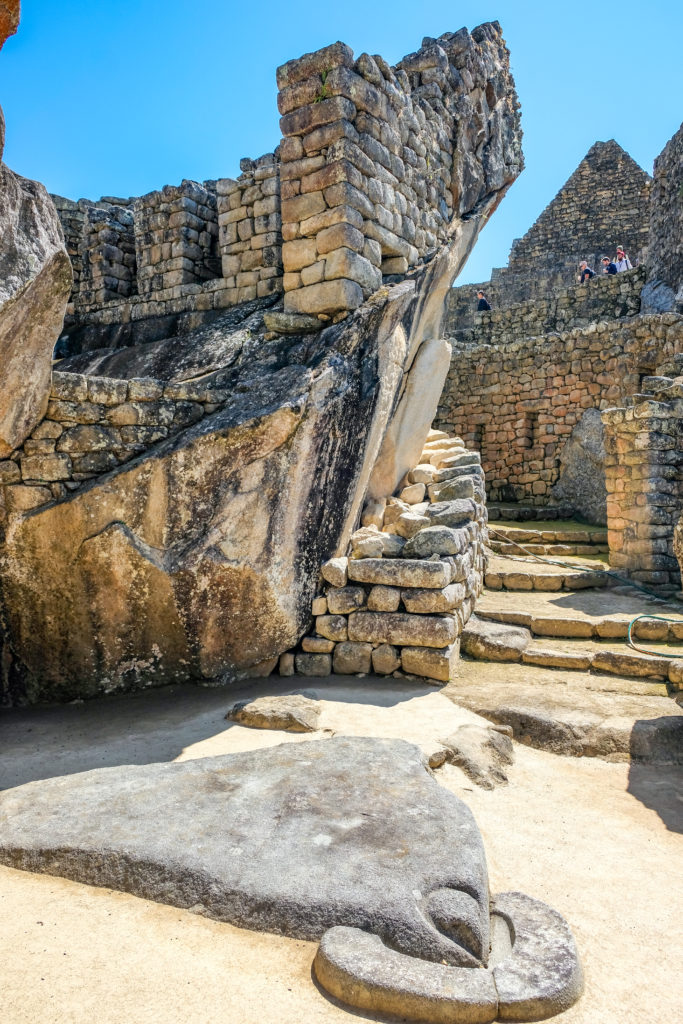
Temple of the condor: Mimicking the wingspan of a Condor in flight
![]()
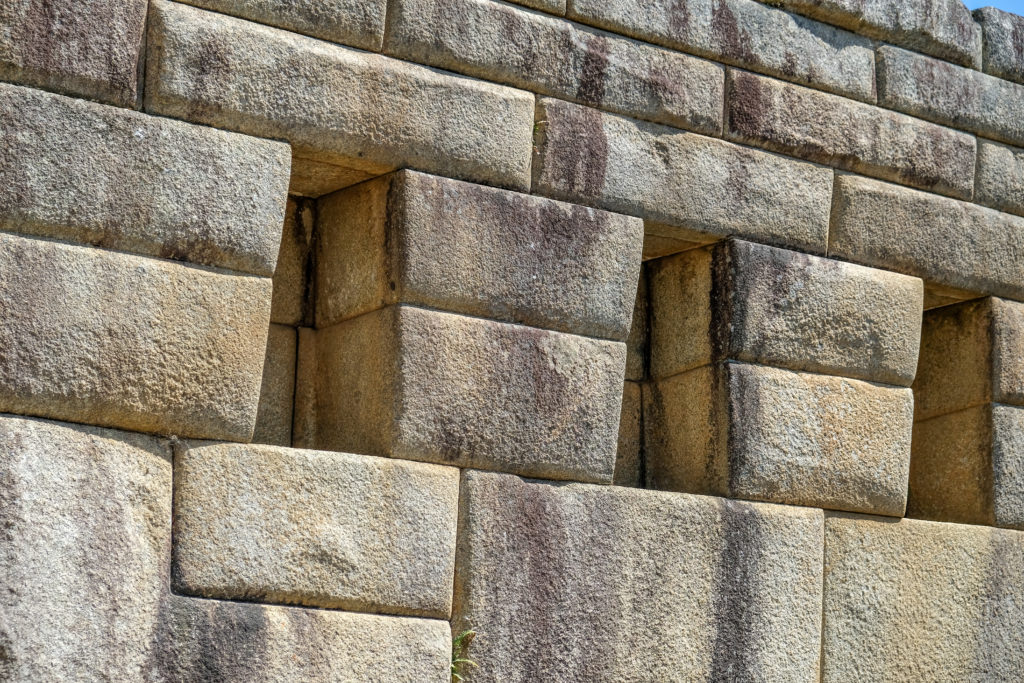
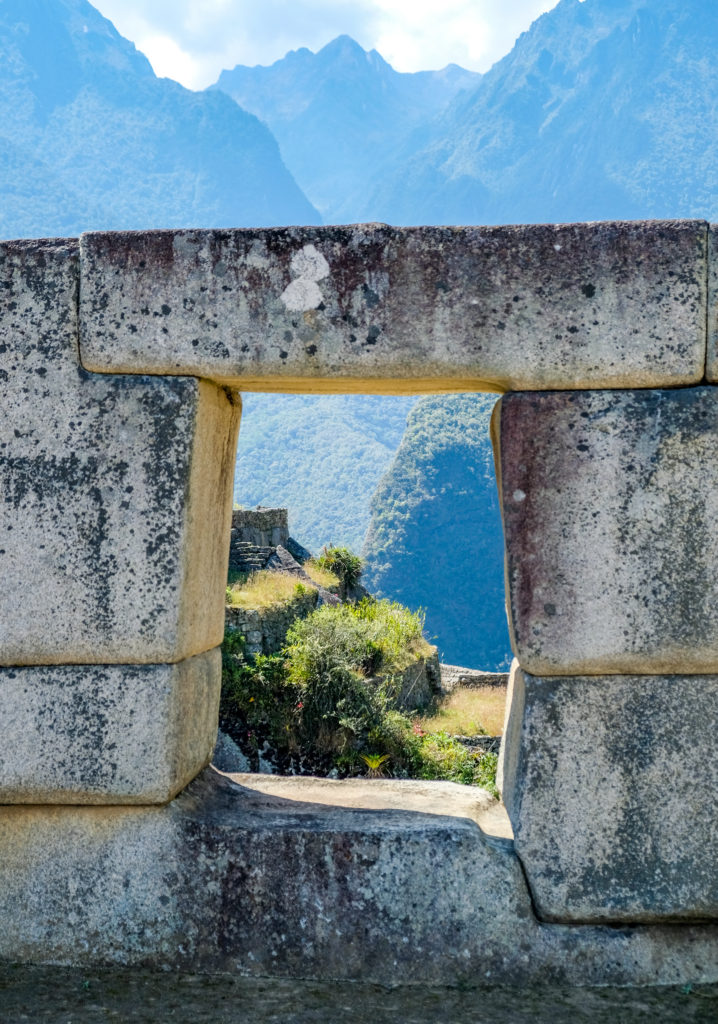
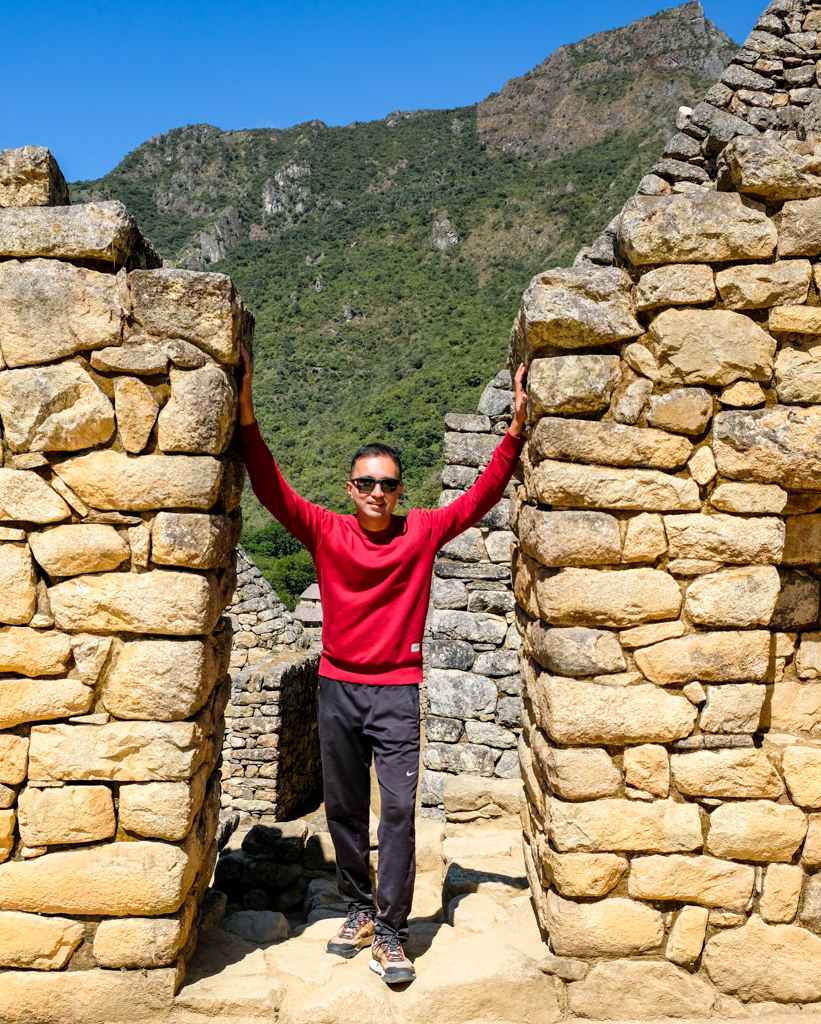
Trying to hold up this collapsing doorway
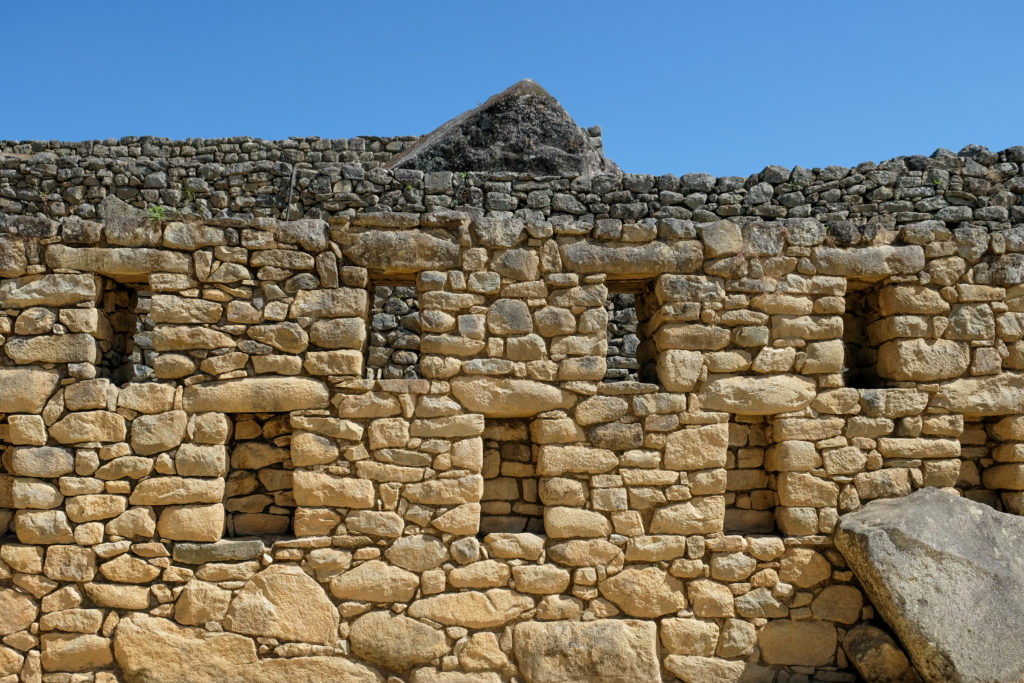
Trapezoidal openings abound throughout
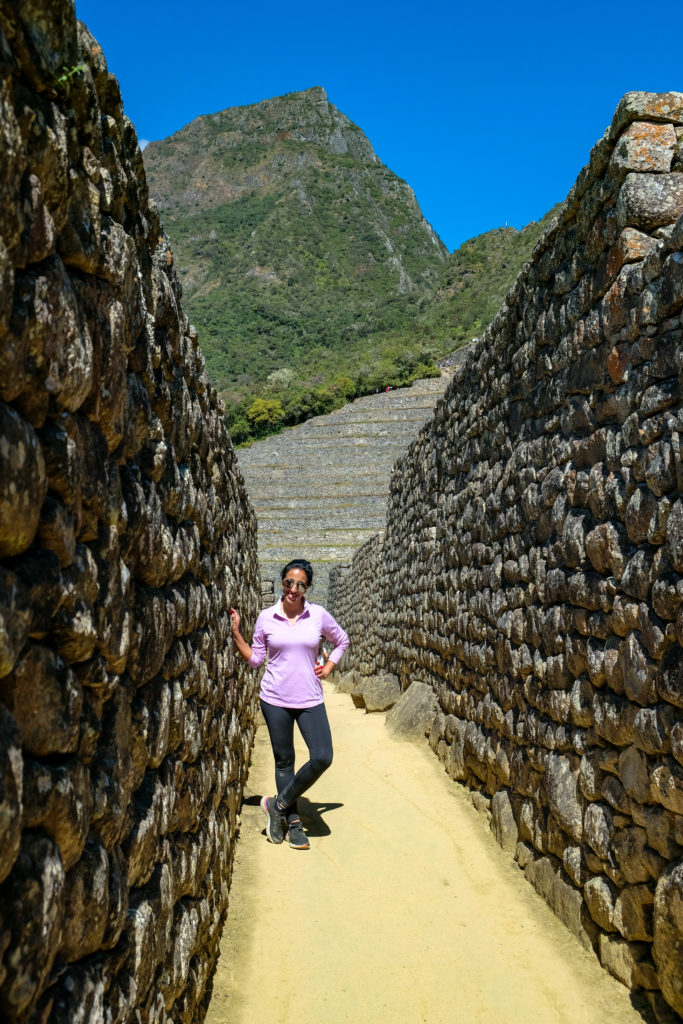
Alas after the few hours trekking through the ruins and taking in all the sights and wonders, it was time to wrap up our once in a lifetime visit and head back down to Aguas Calientes for the trip back. We left Machu Picchu truly awestruck by this ancient citadel, and with an even deeper appreciation of the architectural prowess of the mighty Incas.
![]()

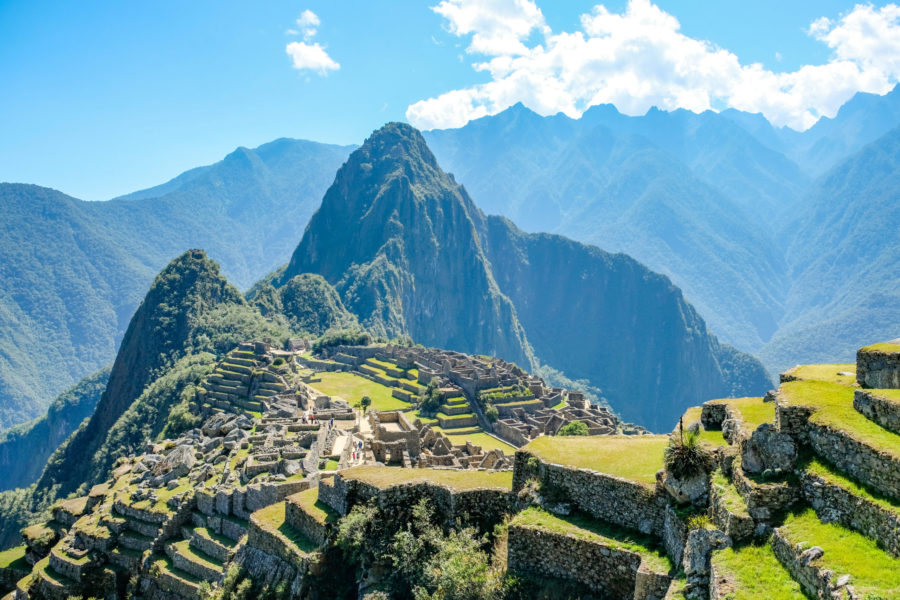
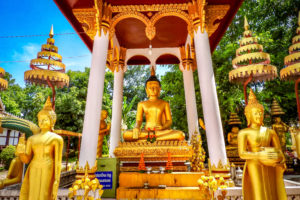
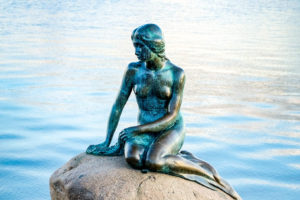
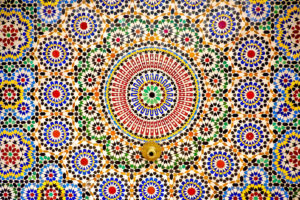




1 Comment
Leave your reply.